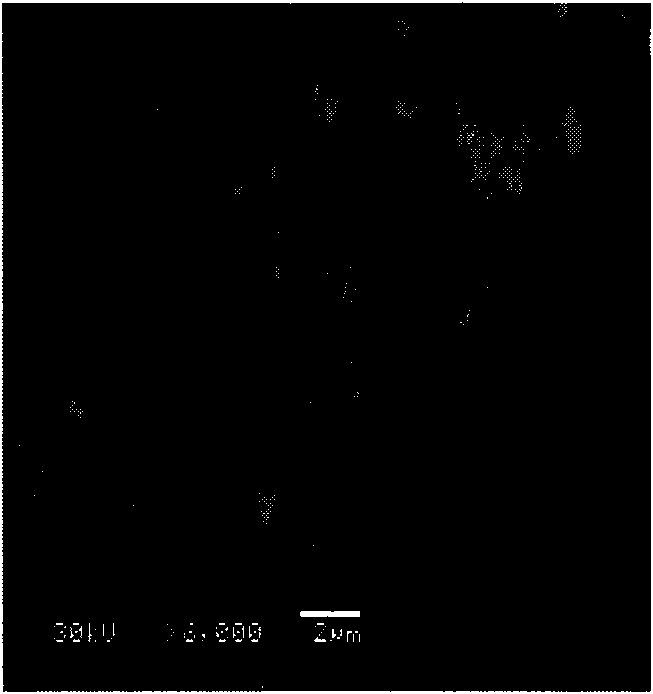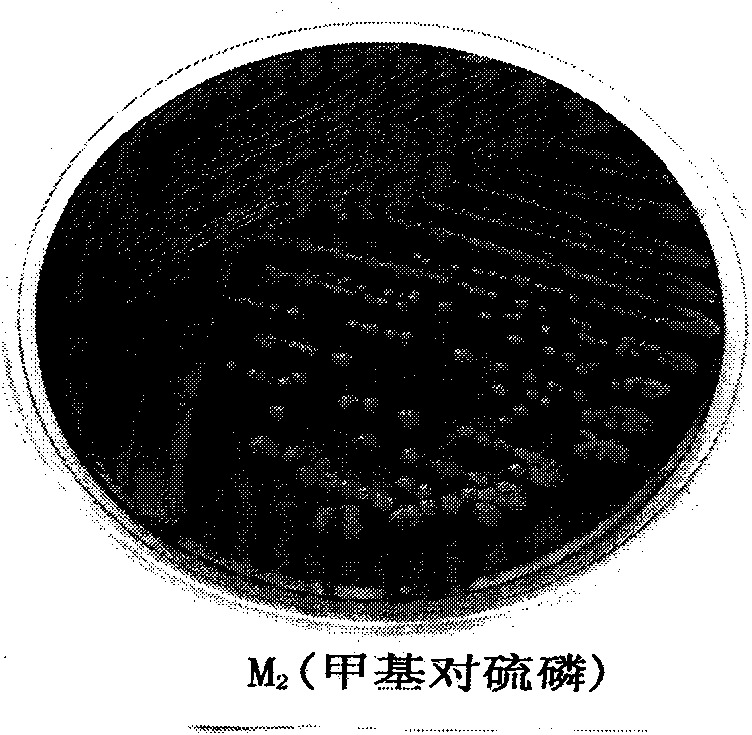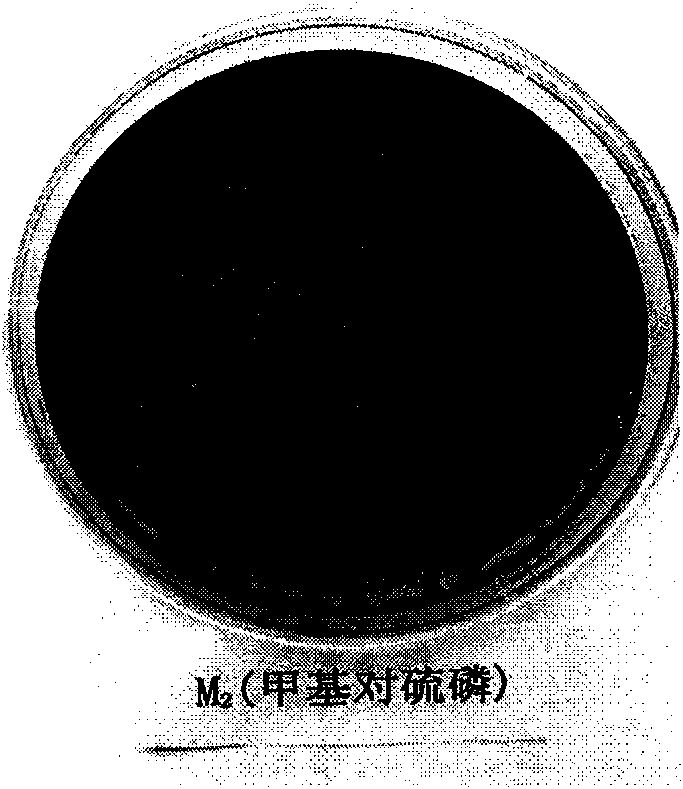Enterobacter bacteria for efficiently degrading organophosphorus pesticides and culturing method thereof
A technology of organophosphorus pesticides and Enterobacter, which is applied in the direction of bacteria, chemical instruments and methods, and methods based on microorganisms, and can solve problems such as environmental pollution, pesticide residues, and ecological balance imbalance
- Summary
- Abstract
- Description
- Claims
- Application Information
AI Technical Summary
Problems solved by technology
Method used
Image
Examples
Embodiment Construction
[0027] Below in conjunction with embodiment the present invention is described in further detail:
[0028] combine figure 1 , the Enterobacter Iudwigii bacterium of the genus Enterobacter Iudwigii that efficiently degrades organophosphorus pesticides has a short rod shape, no spores, a size of 0.6-1.1×1.2-2.5 μm, and a single end with tufted flagella. combine figure 2 , 3 4. The strain is a Gram-negative, aerobic bacterium with an optimum growth temperature of 30-37°C and an optimum pH of 7-8. It is cultivated on blood agar medium for 48 hours to form colonies with a diameter of 1-2mm. It is round, light yellow, opaque, raised, with neat edges, moist and shiny surface. The Genbank accession number of the 16SrDNA of the strain is GQ380575, and it was deposited in the General Microbiology Center of the China Committee for the Collection of Microorganisms on June 8, 2009, and the preservation number is CGMCC NO.3092.
[0029] The described high-efficiency degradation organop...
PUM
| Property | Measurement | Unit |
|---|---|---|
| diameter | aaaaa | aaaaa |
| tolerance concentration | aaaaa | aaaaa |
| tolerance concentration | aaaaa | aaaaa |
Abstract
Description
Claims
Application Information
 Login to View More
Login to View More - R&D
- Intellectual Property
- Life Sciences
- Materials
- Tech Scout
- Unparalleled Data Quality
- Higher Quality Content
- 60% Fewer Hallucinations
Browse by: Latest US Patents, China's latest patents, Technical Efficacy Thesaurus, Application Domain, Technology Topic, Popular Technical Reports.
© 2025 PatSnap. All rights reserved.Legal|Privacy policy|Modern Slavery Act Transparency Statement|Sitemap|About US| Contact US: help@patsnap.com



